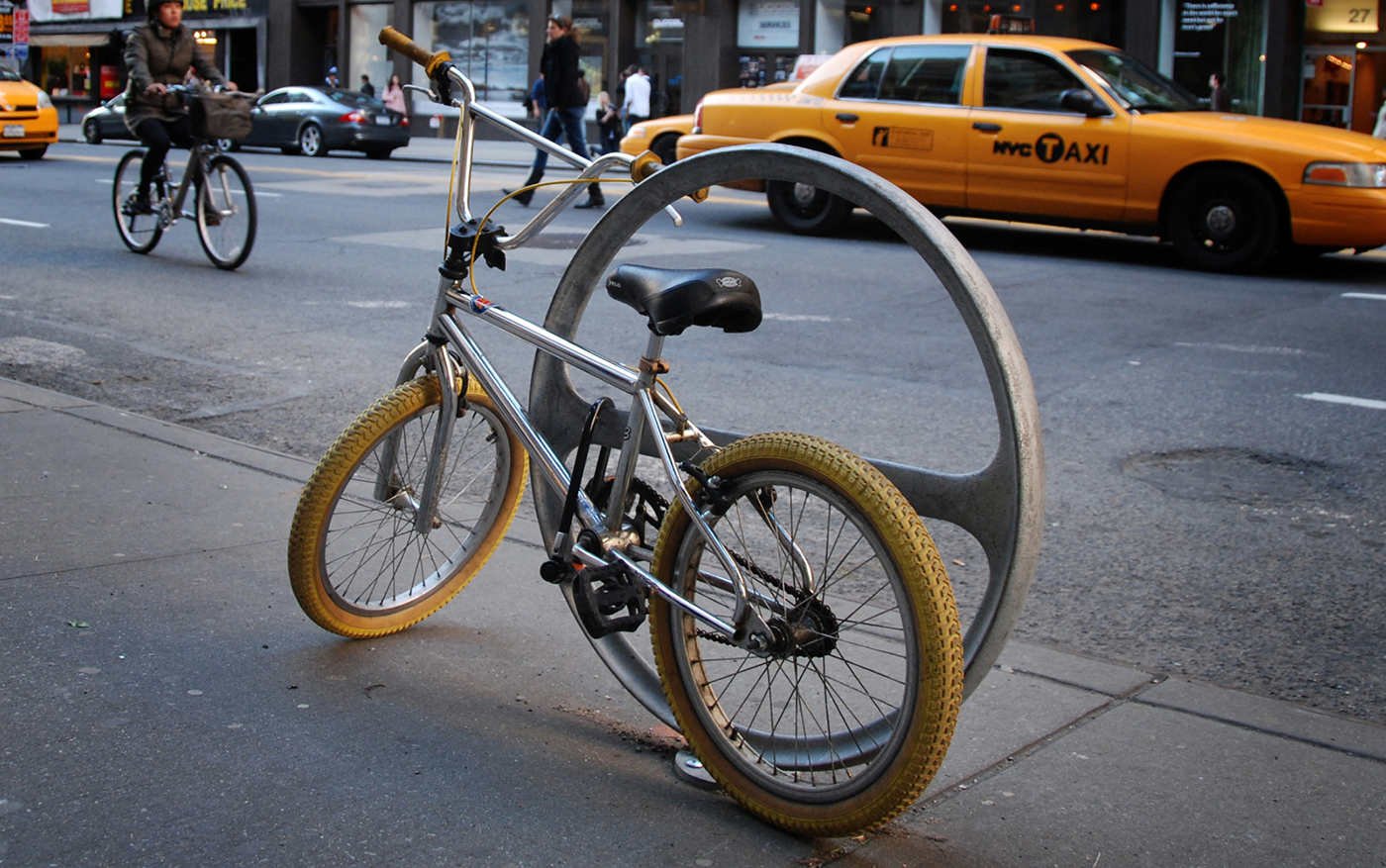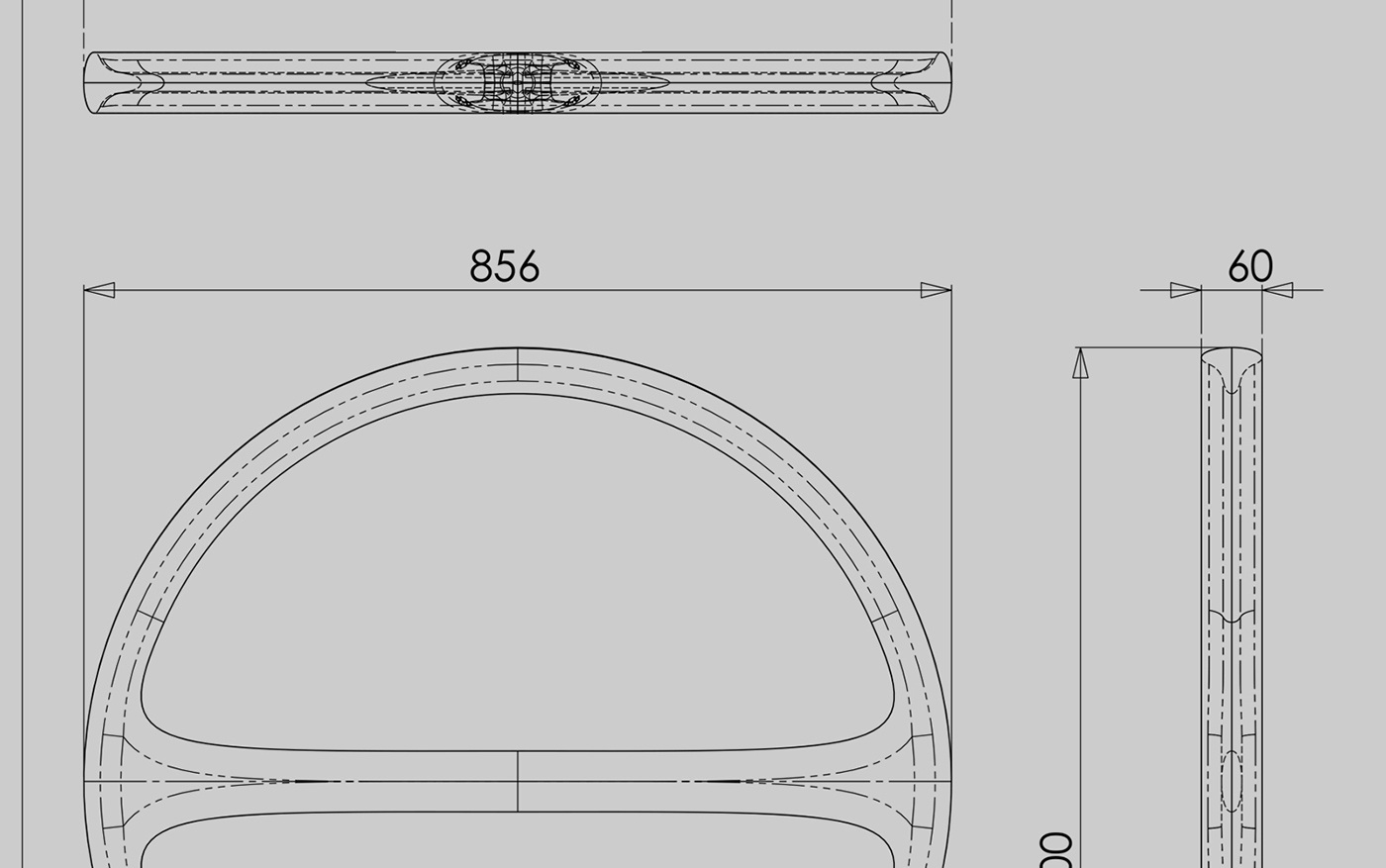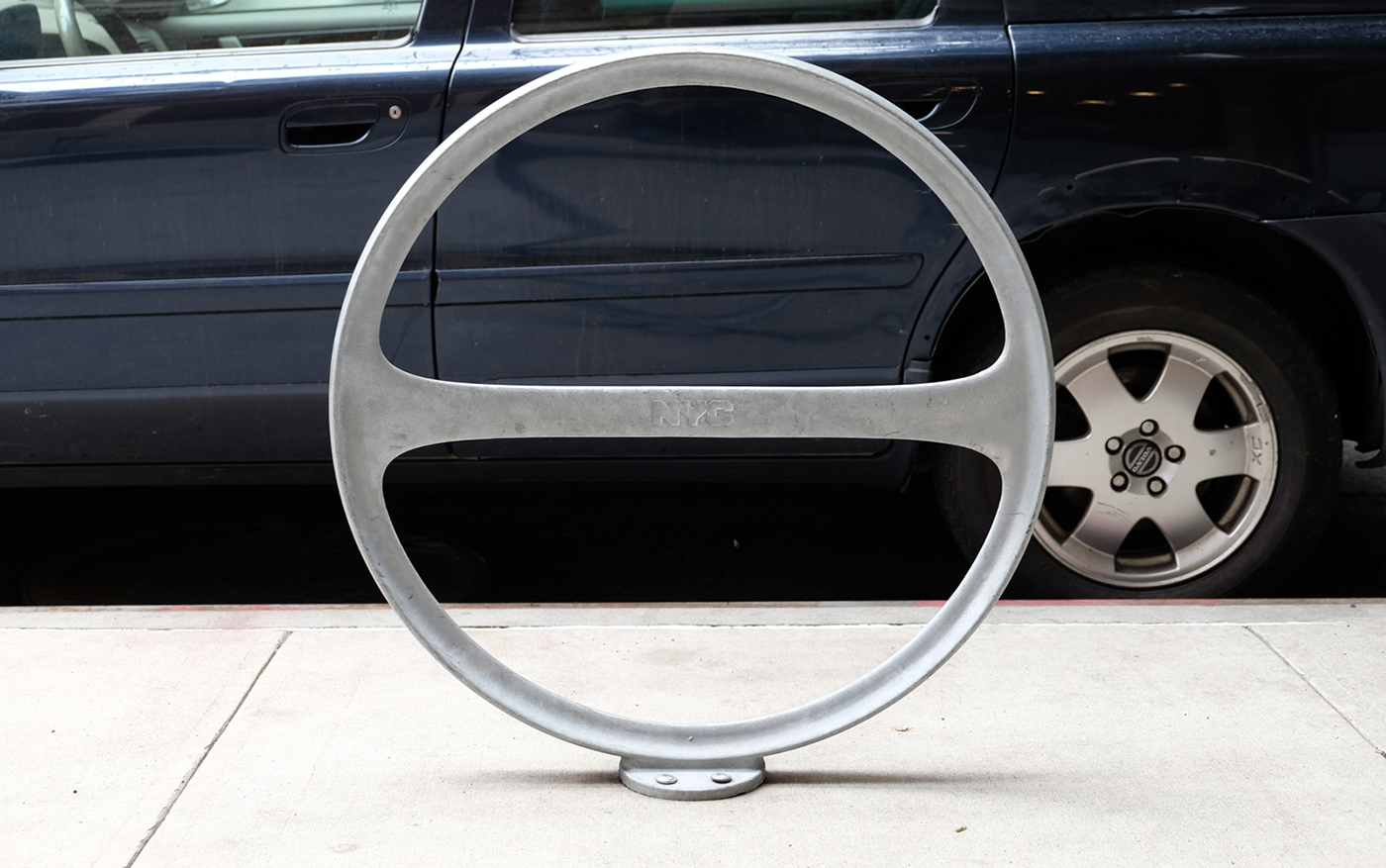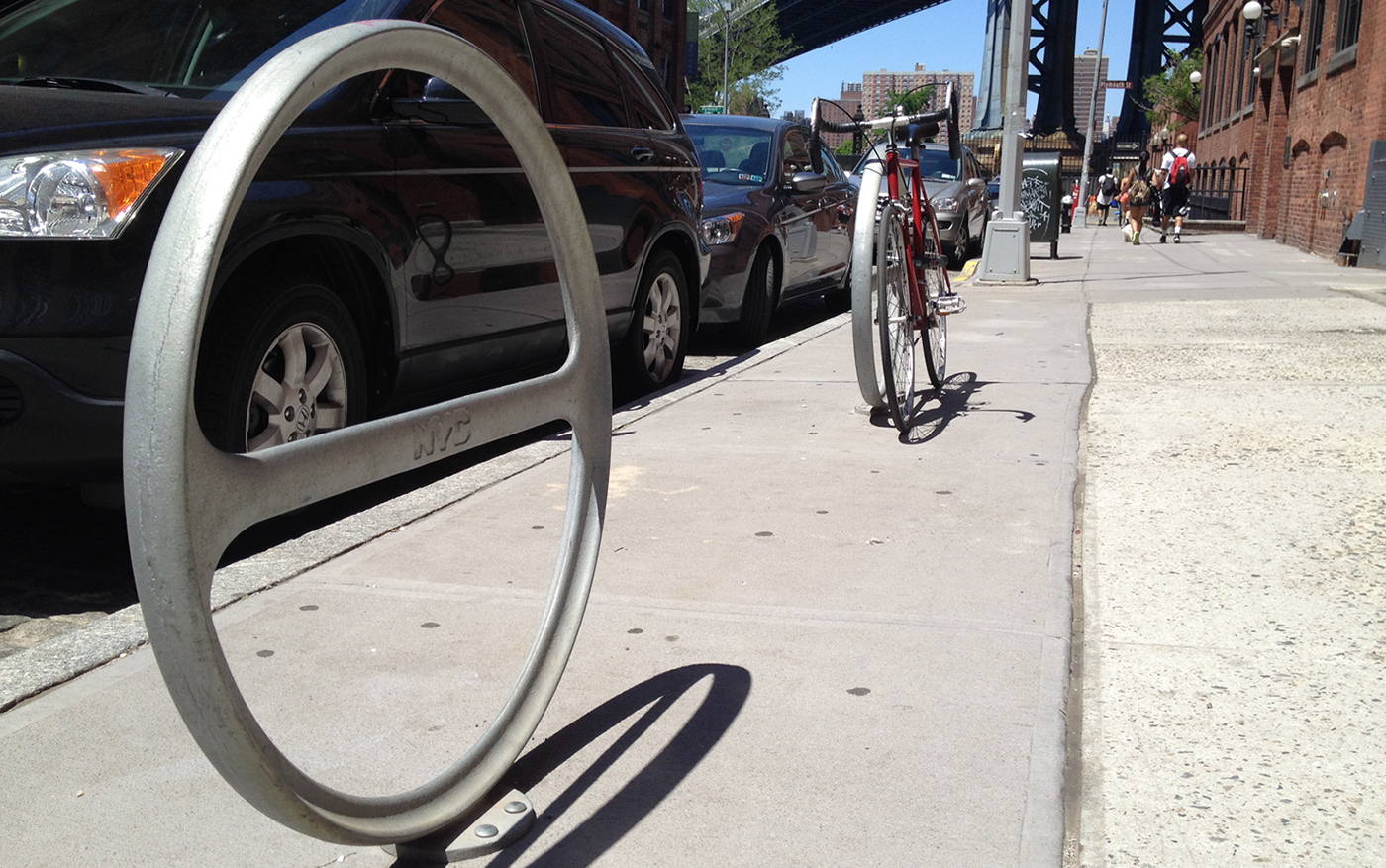Hoop Rack
Department Of Transportation NYC
2010
Supporting cycling in NYC
The Hoop Rack is the new standard bicycle rack for the streets of New York City designed by Ian Mahaffy and Maarten de Greeve for the New York City Department of Transportation.
Over 5000 racks have been installed throughout the city, as part of a larger initiative that is helping transform New York into a friendlier cycling city.
Over 5000 racks have been installed throughout the city, as part of a larger initiative that is helping transform New York into a friendlier cycling city.













Scale model 1:9

Original environment rendering

Recognition
Published
Book: 1000 Product Designs, Flexibound, by Eric Chan, 2010
Book: Urban furniture for a new city life, ICI Consultants, By Sophie Barbaux, 2010
Book: Velo City, Prestel by Gavin Blyth, 2014

Exhibition
Why Design Now, National Design Triennial @ Cooper Hewitt Design Museum, NYC, 2010

Selection of Street Photos from NYC














DOT NYC_Hoop Rack
The new standard bicycle rack for NYC
The new standard bicycle rack for NYC
Populating the streets of NYC
The Hoop Rack is the new standard bicycle rack for the streets of New York City designed by Ian Mahaffy and Maarten de Greeve for the New York City Department of Transportation.
Over 5000 racks have been installed throughout the city, as part of a larger initiative that is helping transform New York into a friendlier cycling city.
Over 5000 racks have been installed throughout the city, as part of a larger initiative that is helping transform New York into a friendlier cycling city.
Robust, functional and safe
The circular shape of the Hoop Rack provides accessible locking points all along it profile allowing for all sizes of bicycle frames and wheels and the intersecting horizontal bar is at an optimal height for locking the bicycle frame.
The slim line design of the rack also allows it to be easily installed on the crowded NYC side walks while consuming a minimum space, preventing congestion.
The design as a whole and in its details has no sharp or protruding edges or parts that could cause harm to pedestrians or bicycles.
The slim line design of the rack also allows it to be easily installed on the crowded NYC side walks while consuming a minimum space, preventing congestion.
The design as a whole and in its details has no sharp or protruding edges or parts that could cause harm to pedestrians or bicycles.
In search of a street icon
Our goal for the design was to create something simple yet symbolic for NYC and that improved function over the existing tracks spread across the city.
The circular and wheel like form expresses a strong relationship with the bicycle and helps communicate the connection.
Though the form we considered how a well it might fit into different urban environments from new modern and new build parts of manhattan to the the more historic parts of the city like the brownstone buildings on the streets around Brooklyn.
The circular and wheel like form expresses a strong relationship with the bicycle and helps communicate the connection.
Though the form we considered how a well it might fit into different urban environments from new modern and new build parts of manhattan to the the more historic parts of the city like the brownstone buildings on the streets around Brooklyn.
Considered life span and material
Creating a design that could stand the test of time and survive harsh weather and treatment living on the streets of NYC was critical . The pure form of the circle has inert strength as well as a simplicity to being timeless.
We considered that the design should have a permanent look in the NYC urban environment rather than something that looks temporary or secondary like many other bicycle racks. Material choice and production methods helped achieve this. We also wanted a good fit with other very permanent street features such as man hole covers and quality park benches. Cast iron was chosen for strength (tried and tested), character, permanence and solidity.
We considered that the design should have a permanent look in the NYC urban environment rather than something that looks temporary or secondary like many other bicycle racks. Material choice and production methods helped achieve this. We also wanted a good fit with other very permanent street features such as man hole covers and quality park benches. Cast iron was chosen for strength (tried and tested), character, permanence and solidity.
Working with repetition
The simple pared down form allows for multiple racks to be placed in close proximity without becoming and ‘eye sore’, crude looking, attention seeking or over bearing. A clean simple design makes this possible.
“Mahaffy and DeGreeve have created a bike rack that works beautifully in a variety of contexts: in historic districts and newly built environments. The form of the rack-a wheel-is ‘product semantics’ in motion!
Mahaffy and De Greeve’s design reflects a modern simplicity that will greatly enhance the City’s streetscape. The rack is round with a horizontal crossbar, evoking an abstracted bicycle tire. Constructed of cast-metal, the design is elegant yet sturdy enough to withstand New York cyclists’ harsh treatment.”
Mahaffy and De Greeve’s design reflects a modern simplicity that will greatly enhance the City’s streetscape. The rack is round with a horizontal crossbar, evoking an abstracted bicycle tire. Constructed of cast-metal, the design is elegant yet sturdy enough to withstand New York cyclists’ harsh treatment.”
Cooper-Hewitt Director, Paul Warwick Thompson




